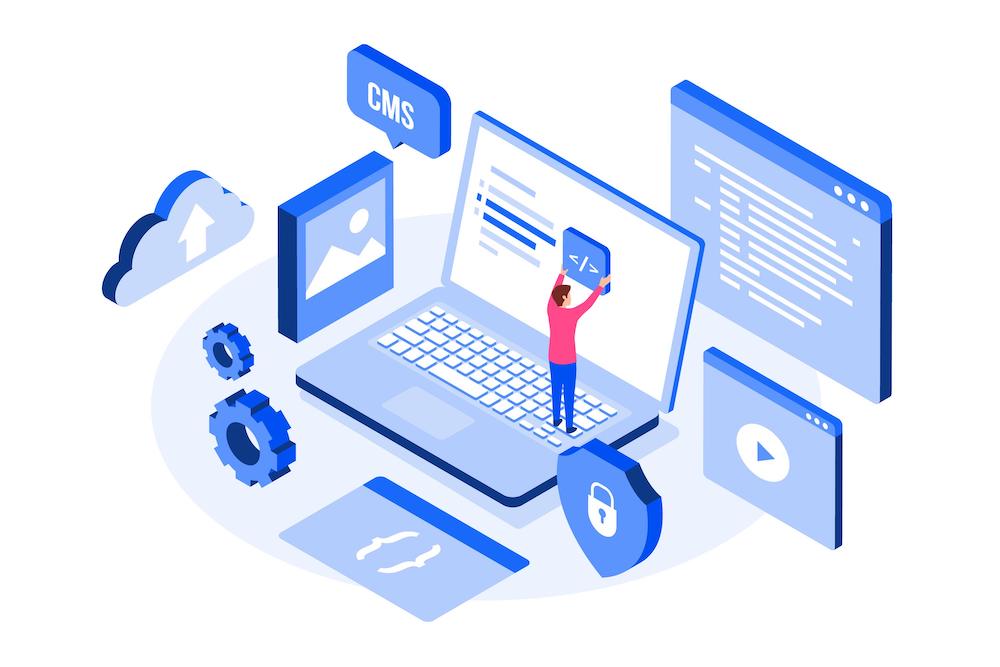A guide for crafting a software survey that effectively evaluates key aspects of software usage, including user experience, features and functionality, and the adequacy of technical support and documentation.
Discerning the effectiveness and efficiency of software is paramount for businesses and individuals alike. Conducting a software survey is an indispensable tool in this evaluation, offering insights into user experience, usability, and overall satisfaction. These surveys not only shed light on what is currently working well but also identify areas for improvement, missing features, and gauge the value for money. Understanding users' requirements and how well they align with the software’s functionality can significantly impact your decision-making process, ensuring that technical resources are allocated to areas that will yield the most benefit.
This article will guide you through crafting a software survey that effectively evaluates key aspects of software usage, including user experience, features and functionality, and the adequacy of technical support and documentation. We will delve into questions that assess usability to understand how intuitively your users can navigate your software. The evaluation extends to scrutinizing software features and functionality, providing insights into whether your software meets user requirements and how it stands in terms of pricing and value for money. Furthermore, exploring users' experiences with technical issues, the availability and quality of documentation, and their overall satisfaction will arm you with the data needed to make informed improvements. By the end of this guide, you will be equipped to conduct a comprehensive software questionnaire that not only measures the current state of user satisfaction but also paves the way for actionable insights leading to a stronger software recommendation among your users.
Understanding the Importance of Software Evaluation Surveys
Software evaluation surveys are a crucial tool in understanding and enhancing the performance and quality of your software products. By conducting these surveys, you can gain a deep insight into how users interact with your software, their likes and dislikes, and their level of satisfaction and loyalty.
What are Software Evaluation Surveys?
Software evaluation surveys are structured tools used to collect feedback from users about various aspects of a software product. These surveys can cover a wide range of topics, from the overall usability and performance of the software to specific features and technical support. The feedback gathered is invaluable in identifying both strengths and areas for improvement.
Why are They Important?
The importance of software evaluation surveys stems from their ability to provide detailed and actionable feedback. Here are several key benefits:
- Performance and Usability Assessment: Software evaluation surveys can help you measure how well your software meets the needs of its users. Questions about the ease of use, configuration, and whether the software meets the user's requirements are crucial. This feedback can guide developers in optimizing the software to enhance user satisfaction.
- User Satisfaction and Loyalty: Understanding how satisfied users are with your software is essential for customer retention. Surveys often include Net Promoter Score (NPS) questions that gauge the likelihood of users recommending the software to others. This metric is a powerful indicator of user loyalty and satisfaction.
- Identifying User Needs and Expectations: Surveys can uncover the specific needs and expectations of your users. This includes discovering what features they find most valuable and any additional functionality they desire. Such insights are critical for prioritizing development efforts and aligning your product roadmap with user expectations.
- Enhancing Marketing and Sales Efforts: Positive testimonials and reviews gathered through surveys can be used in marketing campaigns to attract new customers. Moreover, understanding why users prefer your software over competitors’ offers strategic advantages in market positioning.
- Building Trust and Rapport: By regularly seeking feedback, you demonstrate to users that their opinions are valued. This can strengthen user relationships and enhance customer loyalty, creating a community of advocates for your software.
- Competitive Analysis: Surveys can provide insights into what competitors are doing differently or better. This information can help you adjust your strategy to ensure your software remains competitive in terms of features, pricing, and user experience.
In conclusion, software evaluation surveys are indispensable for any organization aiming to maintain and enhance the relevance and effectiveness of its software products. By integrating user feedback into development and strategic planning, businesses can ensure their software continually evolves to meet and exceed user expectations.
Questions to Assess Usability and User Experience
Overall Usability
To assess the overall usability of your software, consider asking questions that focus on user-friendliness, task completion efficiency, and clarity of communication. Key questions might include:
- Did you encounter any difficulties using the software?
- On a scale of 1 (difficult) to 5 (very easy), how easy was it to learn and use the software?
- What aspects of the software's usability impressed you the most?
Ease of Navigation
Understanding how easily users can navigate your software is crucial. Questions to explore this area could be:
- Did you find it easy to locate features and understand their functions?
- How easy is it to find the features you need?
- How did you find navigating to specific pages or sections within the software?
Task Efficiency
Efficiency in completing tasks is a significant part of the user experience. To gauge this, you might ask:
- How quickly does the software respond to your inputs and actions?
- Do you experience any lag or delays while using the software?
- Were the labels, instructions, and terminology clear and consistent, aiding in quick task completion?
Interface Aesthetics
The visual appeal and layout of your software also play a role in usability. Consider including questions such as:
- What do you think of the interface design of our app?
- Were you able to quickly find what you were looking for, and was the information layout intuitive?
- How would you rate the visual design and overall aesthetic appeal of the software?
Responsiveness and Performance
Finally, assessing the software's performance on various devices is essential for understanding its usability. Useful questions include:
- How well does the software perform on your device (computer, phone, etc.)?
- How often do you encounter crashes, errors, or unexpected behavior?
- Does the software produce accurate results consistently across different platforms and devices?
By incorporating these questions into your software survey, you can gain valuable insights into the usability and user experience of your product, helping you identify areas for improvement and ensure your software meets user expectations.
Evaluating Software Features and Functionality
Identifying Key Features
When crafting a software survey, it's crucial to pinpoint the essential features that your software offers. Ask users directly if the software has all the features they need and what aspects of the software's functionality they find most valuable. This not only helps in understanding the strengths of your software but also in communicating value to potential users who may read the survey results.
Missing Features
Understanding what your software lacks is just as important as knowing its strengths. Include questions about any essential features that are missing and that users would like to see added. This feedback is vital for guiding future updates and ensuring your software evolves in line with user needs and expectations.
Effectiveness of Features
To gauge how well the features meet user requirements, consider asking how satisfied users are with the range and quality of the features offered. Additionally, inquire about the effectiveness of the software in meeting their needs on a scale of 1-5. This can help identify which features are performing well and which may require reevaluation or enhancement.
Utilization of Features
It's not uncommon for software to have underutilized features. Include questions to check whether users have utilized all available features and which ones they find most useful for their needs. This can highlight areas where user education might improve feature adoption or where features could be adjusted to increase their utility.
Suggestions for Improvement
Finally, gather actionable insights by asking users which existing features could be improved or made more user-friendly. Encourage open-ended responses where users can detail their experiences and provide specific suggestions. This will not only help in making targeted improvements but also in fostering a sense of community and responsiveness as users see their feedback being acted upon.
Assessing Technical Support and Documentation
Adequacy of Documentation
When you interact with technical support, the adequacy of documentation plays a crucial role in the speed and efficiency of resolving your issues. High-quality documentation should be comprehensive, easy to use, and up-to-date, enabling you to find solutions quickly. Feedback on documentation often includes evaluations of its completeness, readability, and the relevance of code examples provided. This feedback is vital for continuous improvement, ensuring that the documentation meets your needs and facilitates a smoother user experience.
Responsiveness of Technical Support
Your satisfaction with technical support is significantly influenced by the responsiveness of the team. Questions such as "How quickly does the software respond to your inputs and actions?" or "How satisfied are you with the promptness of email response?" help gauge the efficiency of support services. The ability of technical support to address and resolve issues promptly is a critical measure of their effectiveness, impacting your overall satisfaction with the service.
Handling Technical Issues
Handling technical issues effectively is paramount to maintaining trust and satisfaction. This involves not only the resolution of current problems but also the technical support's capability to understand and preempt potential future issues. Surveys often inquire whether the problem was resolved on the first contact and if the solution provided was satisfactory. These insights help in refining the problem-resolution processes and enhancing the quality of support provided.
Overall Technical Support Experience
The overall technical support experience encompasses various aspects, from the professionalism and knowledge of the support team to the ease of contacting customer service. Surveys might ask you to rate your overall satisfaction with customer service, the knowledge and courtesy of the representative, and the effectiveness of the resolution provided. Collecting this data allows organizations to monitor and improve the quality of support continuously, ensuring that your interactions with technical support are as helpful and positive as possible.
Conclusion
Across the various dimensions explored in this guide—from understanding the crucial role of software evaluation surveys to delving deep into assessing usability, features, functionality, and technical support—we've navigated the comprehensive landscape of crafting effective software surveys. These insights aim not just to measure current satisfaction levels but also to unearth actionable intelligence that propels software enhancements. By embracing the feedback gathered, software developers and companies can fine-tune their offerings, ensuring they align more closely with user expectations and market demands, ultimately fostering a product that stands resilient in the face of evolving user needs and technological advancements.
As we conclude, let's reiterate the essence of integrating thoughtful, well-structured survey questions throughout the evaluation process. This strategic approach not only bolsters the software's value proposition but also reinforces the relationship between users and developers by demonstrating a commitment to excellence and continuous improvement. The journey of refining software is perpetual and informed by the voices of its users, and by leveraging the insights garnered through these surveys, we open avenues for innovation, enhanced functionality, and, most significantly, user satisfaction that echoes the software's impact and success in the digital ecosystem.
FAQs
1. What are essential questions to include in any survey?
Essential questions for any survey include the fundamental queries of how, why, who, when, and what. These questions are crucial for gathering comprehensive data, even though they might not be as frequently utilized as other more specific questions.
2. What are some effective survey questions for evaluating softwares?
When evaluating softwares, consider asking the following questions in your survey:
- Did the software meet your initial expectations?
- Which aspects of the software did you find most beneficial?
- How relevant was the software content to your needs?
- Would you recommend this software to others?
3. What are the best questions to ask in a technical support survey?
To evaluate technical support services, include questions such as:
- How satisfied are you with the overall quality of service you received?
- Do you consider the problem resolved?
- Was your question or issue resolved the first time you contacted technical support?
- How satisfied are you with the phone support experience you received?
Create Survey Now













